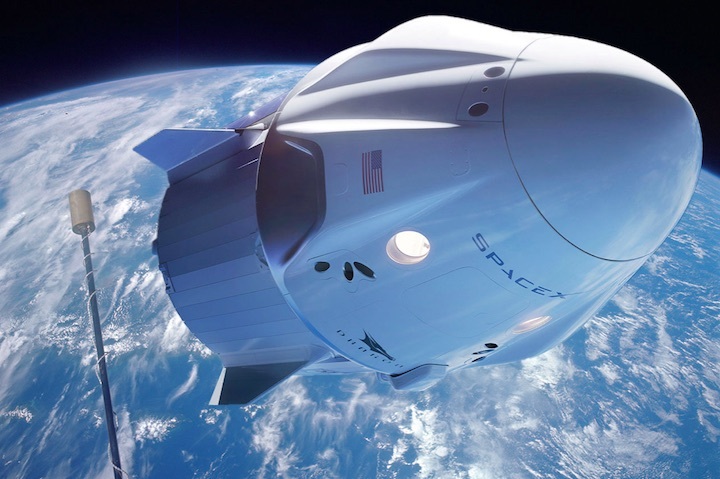21.03.2020

NASA and SpaceX are targeting mid-to-late May for the first flight of astronauts to the International Space Station from American soil in nearly a decade despite the advance of the coronavirus, the agency confirmed Wednesday.
If schedules hold, NASA astronauts Bob Behnken and Doug Hurley will fly on a Crew Dragon capsule from Kennedy Space Center's pad 39A, breaking the grip that Russian spacecraft have held on crewed launches to the ISS. The U.S. was forced to purchase seats on Soyuz after the end of the space shuttle program in 2011.
If all goes well with Crew Dragon's launch in May – technically its last test mission – it will pave the way for full, certified flights of the capsule to the space station. Much like its premiere test flight in March 2019, it will need to successfully launch, approach and dock, then depart and re-enter Earth's atmosphere before splashdown in the Atlantic.
To return crews to the ISS on American hardware, NASA selected SpaceX and Boeing under multibillion-dollar contracts. The latter's spacecraft, Starliner, failed to reach the ISS during an uncrewed test flight in December and its software is being re-worked for its next unscheduled test.
Astronauts are required aboard the $100 billion ISS for a variety of reasons, ranging from maintaining its day-to-day operations to conducting scientific experiments that fly on different spacecraft.
Pandemic impacts
What remains to be seen, however, is the impact of the global coronavirus pandemic on agency and company operations moving forward.
NASA, for example, is operating at a somewhat limited capacity while all non-critical employees telework. Its update of the launch date was primarily directed at media organizations applying for credentials, a complicated process that can take weeks or months to complete – especially for international applicants.
On the SpaceX side, CEO Elon Musk has asked his employees to stay vigilant about the virus but has generally spoken out against widespread panic. The company did not respond to inquiries from FLORIDA TODAY about how it is changing operations.
"The company needs to press on where it can," said Dale Ketcham, vice president of external relations at Space Florida, the state's spaceport authority. "The whole world shouldn't go into the fetal position."
But the pandemic also applies to the Space Coast as a whole, which is expected to host hundreds of thousands of visitors to watch Crew Dragon lift off from KSC. Falcon Heavy's debut flight in 2018, for example, brought in more than 100,000 visitors, many of whom crowded in tight quarters on piers, beaches, restaurants, and even parking lots.
The Centers for Disease Control and Prevention says the virus is typically spread within about six feet, a guideline likely to be ignored in big crowds. The first crewed launch could further complicate things by bringing in more visitors than the Space Coast has seen in nearly a decade.
"Absent the pandemic, I would have anticipated half a million people," Ketcham said. "But there's still going to be a hell of a lot of people here."
Chris Quilty, president of St. Petersburg-based Quilty Analytics, said the mission's timing and relation to the coronavirus comes down to two questions: despite the virus, can NASA support a mission by May, and how does it deal with crowds?
"I assume it's something that they can make happen," he said. "They can lift restrictions for certain employees and activities to make sure the time schedule can be carried out."
"But that second question about enticing people to show up and watch the launch, I think that's a problem for the local authorities to deal with," he said.
As of Thursday morning, COVID-19, the disease caused by the coronavirus, was confirmed by Johns Hopkins University at 227,743 cases worldwide and had caused 9,318 deaths. In the U.S., the figures were reported at 9,415 and 150, respectively.
Quelle: Florida Today
